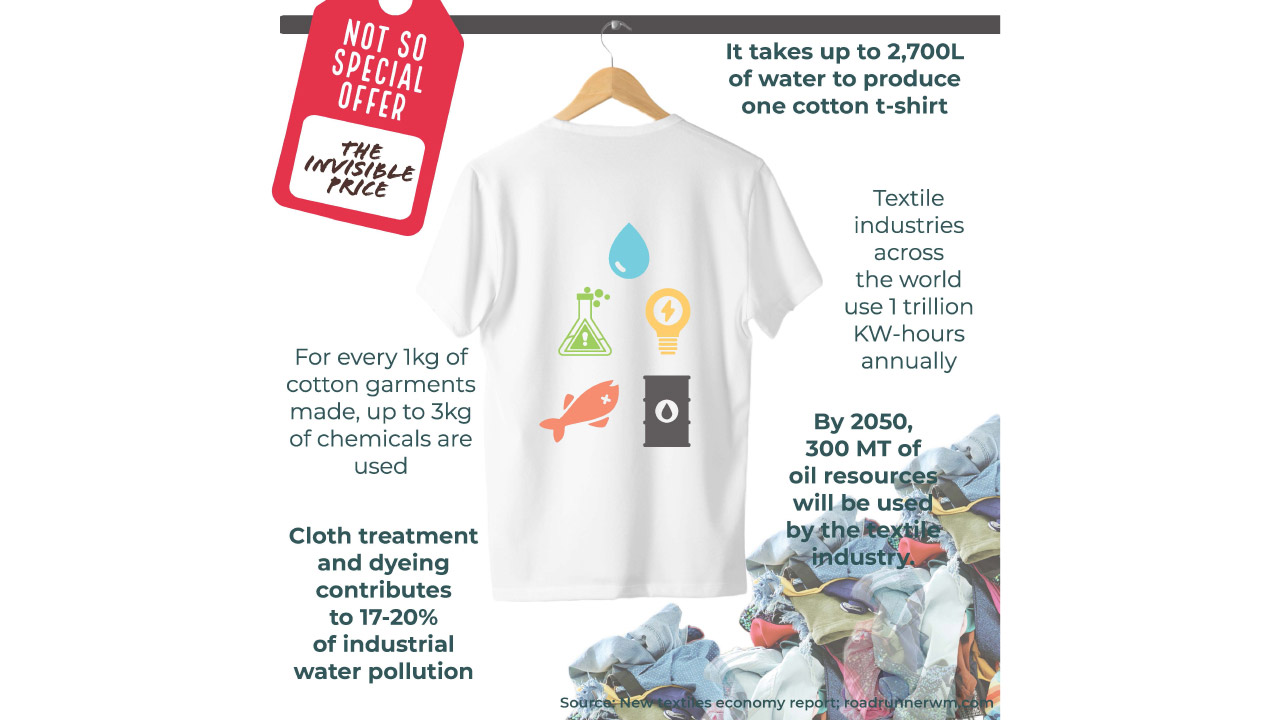Sustainability Today: This season, sustainability is the fashion statement
 CREDIT: FANSHAWE SUSTAINABILITY
CREDIT: FANSHAWE SUSTAINABILITYAccording to the report, in 2015, greenhouse gas emissions from textile production exceeded that of international flights and shipping combined.
About a decade ago, an inferno swept through a building outside Dhaka, Bangladesh. Over 100 people were killed and many more injured. Tragedy struck a great deal of homes.
This incident catapulted the issue of the poor working conditions of garment workers in Bangladesh to the international podium and highlighted the social effects of fast fashion.
Clothing and oppression have a long history together. Recount Gandhi’s first campaign in colonial India, where he fought against British planters who forced farmers to grow indigo, a product used to colour clothing, instead of food crops. Fast forward a century later, and a new creed of unsustainable practices relating to clothing is creating a host of problems that affect us and the planet. According to the report “A New Textiles Economy: Redesigning Fashion’s Future,” the dyeing and treatment of textiles is the reason behind 20 per cent of industrial water pollution globally. The demand on the supply chain manifests negative effects on textile workers such as unsafe practices, poor working conditions and low wages. According to the report, in 2015, greenhouse gas emissions from textile production exceeded that of international flights and shipping combined. It is estimated that if things continue as they are, by 2050, over 150 million tonnes of clothing will be sent to landfills or burned.
The grim reality is striking and can have far-reaching consequences if not dealt with immediately. Here is where the Sustainable Development Goals can make a difference, by guiding the world to tackle such issues. For example, waste volumes can be mitigated by following Goal 12 (Responsible Consumption and Production); climate change impacts can be decelerated by adhering to Goal 13 (Climate Change); workers’ rights and well-being can be ensured by considering Goal 8 (Decent Work and Economic Growth); water pollution can be controlled by put in place Goal 6 (Clean Water and Sanitation); and the industry and its supply chains can make their operations more sustainable by practicing and giving space for innovation (Goal 9: industry innovation and infrastructure).
At the individual level, we can help by supporting brands that practice sustainability; donating clothes when they are not used (at Fanshawe, you can donate clothing and other materials at the Sharing Shop), shopping at thrift stores, and practicing minimalism by being mindful of our shopping habits. It’s time we bring sustainability in vogue and strike a pose saying that we will be better than we are today.
Days to look forward to:
- March 25: International Day of Remembrance of the Victims of Slavery and the Transatlantic Slave Trade
- March 28: Sustainability Trivia Night — SDGs edition (7 p.m. – 9 p.m. in The Out Back Shack)
- April 5: International Day of Conscience
- April 7: World Health Day















